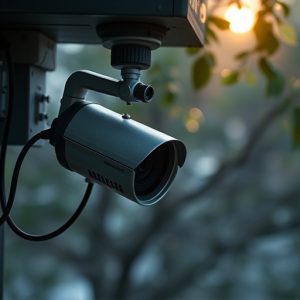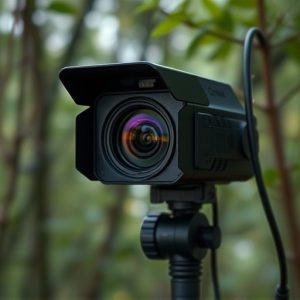Unveiling Hidden Threats: Scanning Methods for Secret Recording Devices with Decoy Cameras
In today's digital era, hidden recording devices pose a significant privacy concern. Businesses…….
In today's digital era, hidden recording devices pose a significant privacy concern. Businesses are fighting back with innovative solutions like signal scanning and specialized detection technologies to find covert cameras, especially focusing on the growing market of Convincing Decoy Cameras. These decoys, designed to look like everyday items such as plants or fire alarms, offer a discreet way to enhance security while maintaining an aesthetically pleasing environment. Skilled installers strategically place these devices to capture evidence without raising suspicion, deterring theft and vandalism.
Hidden recording devices pose a significant threat to privacy and security, often going undetected. This article explores innovative methods to combat this growing concern. We delve into the world of hidden cameras, their diverse applications, and the legal gray areas they create. The focus shifts to decoy cameras as a proactive solution, showcasing their design and effectiveness in deterring clandestine recordings. Additionally, we examine advanced signal scanning techniques, including RF detection and thermal imaging, to ensure comprehensive protection for businesses and individuals alike.
- Understanding Hidden Recording Devices and Their Challenges
- – Definition and types of hidden recording devices
- – Common locations where these devices are hidden
Understanding Hidden Recording Devices and Their Challenges
Hidden recording devices, often referred to as covert cameras or surveillance equipment, pose a unique challenge in today’s digital era. These sophisticated gadgets are designed to operate discreetly, making it difficult for individuals and businesses to detect their presence. From small, pen-sized cameras to advanced audio recorders disguised as everyday objects, these devices can be easily hidden, capturing sensitive information without consent. This raises significant privacy concerns, especially in commercial settings where the use of convincing decoy cameras becomes a strategy for deterring such unauthorized surveillance.
In response to this growing issue, many businesses are turning to innovative solutions like advanced signal scanning methods and specialized detection technologies. By employing sophisticated software and hardware, organizations can now actively hunt down these hidden recording devices, ensuring a safer environment for their employees and sensitive data. This proactive approach is crucial in maintaining privacy, especially with the increasing prevalence of covert surveillance equipment on the market, often marketed as Convincing Decoy Cameras for Business use.
– Definition and types of hidden recording devices
Hidden recording devices, also known as covert cameras or surveillance equipment, are electronic devices designed to capture and store audio and/or visual data surreptitiously. They can range from small, easily concealed cameras hidden in everyday objects like pens, pagers, or smoke detectors, to more sophisticated systems disguised as decoy items such as convincing decoy cameras for business purposes. These devices operate silently, often with infrared capabilities, and can record high-quality video and audio, making them powerful tools for surveillance and security applications.
There are various types of hidden recording devices on the market, each with unique features tailored to different needs. For businesses looking to enhance their security measures, Convincing Decoy Cameras offer an effective solution. These cameras mimic real objects, like plants or fire alarms, while secretly capturing footage. Their realistic designs make them less obvious to potential intruders, providing a layer of discretion and enhanced safety for commercial spaces.
– Common locations where these devices are hidden
Hidden recording devices, often employed for surveillance or security purposes, can be found in various unexpected locations. In business settings, convincing decoy cameras are strategically placed to deter potential theft or vandalism. These might include simulated fire alarms, smoke detectors, or even seemingly innocuous decorative items like plants or clocks. Such decoys serve as effective visual deterrents, luring would-be intruders into a false sense of security while capturing evidence discreetly.
In addition to these creative decoys, common hiding spots for hidden recording devices include door handles, light switches, electrical outlets, and wall art. Skilled installers exploit human behavior and common blind spots, positioning the devices in places that are both accessible and barely noticeable. This subtle approach ensures that any footage captured provides valuable intelligence without raising suspicion.
In conclusion, the strategic deployment of convincing decoy cameras, tailored for business environments, offers a robust solution against hidden recording devices. By understanding the diverse types and common hiding places of these clandestine recorders, businesses can fortify their security measures with visually compelling decoys. This approach not only discourages illegal activities but also serves as a powerful psychological deterrent, ensuring a safer and more secure working environment.


